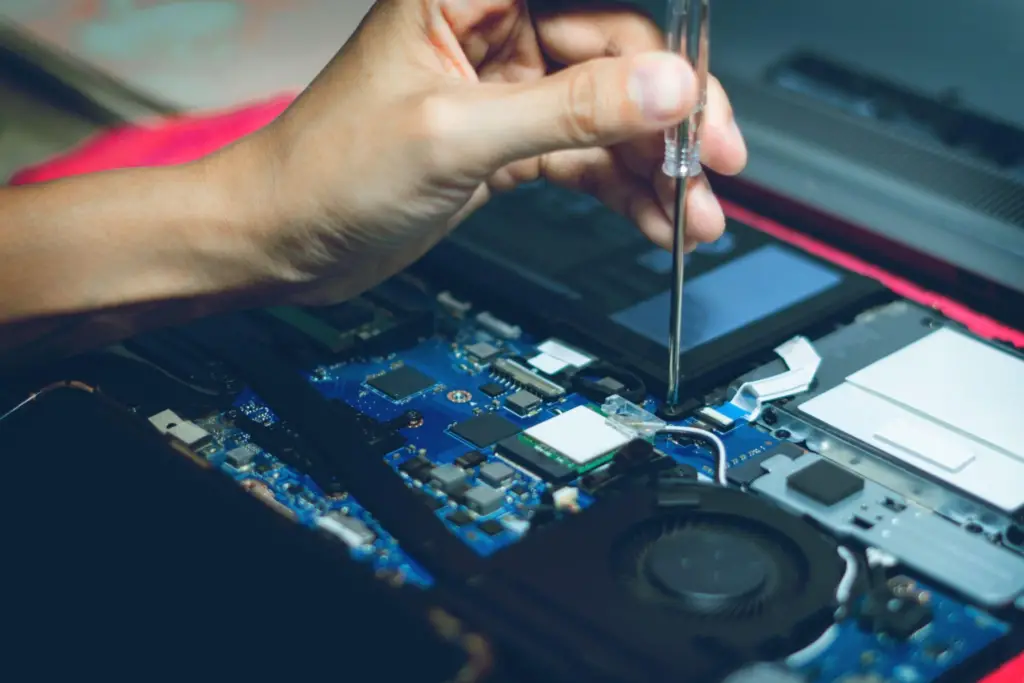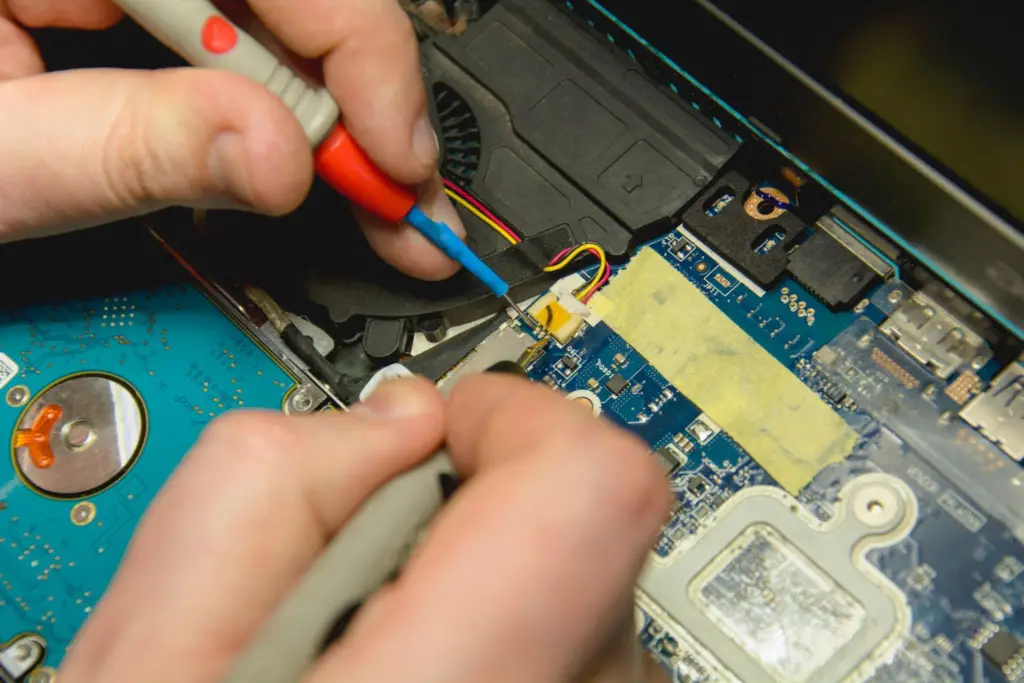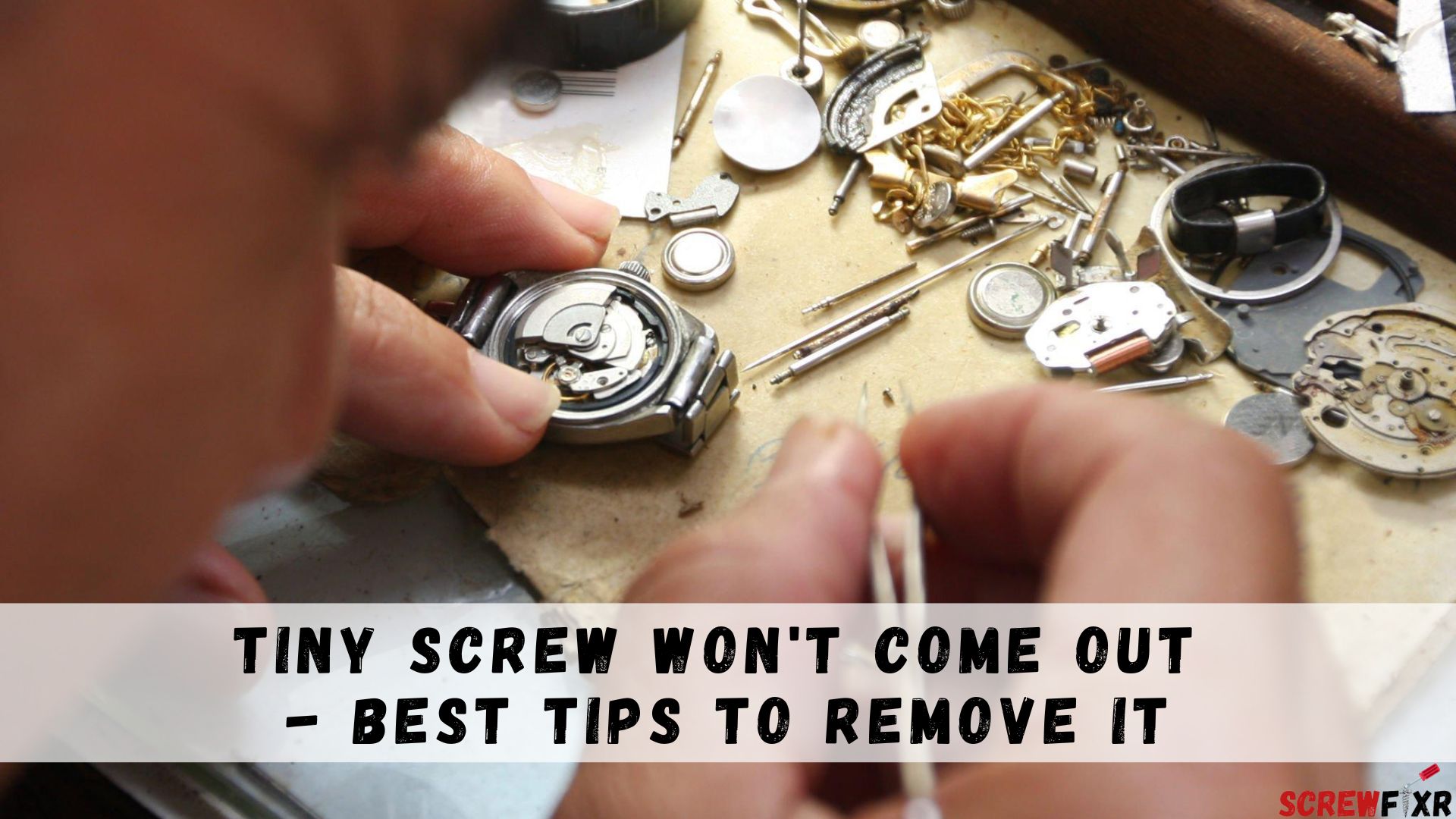Have you ever encountered a tiny screw that just won’t budge no matter how hard you try? Whether you’re trying to repair a device or remove a screw from furniture, dealing with a stuck tiny screw can be frustrating and time-consuming. Yet it’s important to remove the screw without causing any damage to the surrounding materials.
We’ll provide you with the best tips and tricks to remove a stuck tiny screw without causing any damage. From common reasons why it gets stuck to the tools and materials you’ll need to remove them, we’ll cover it all. So, read on to understand how to handle a tiny screw won’t come out and get that stubborn screw out for good.
Common Reasons Why Tiny Screws Get Stuck

Tiny screws can get stuck for various reasons. Here are some of the most common ones:
Over-tightening
One of the most common reasons is over-tightening. When you tighten a screw too much, it can cause the threads to deform or strip, making it difficult to remove the screw.
Stripped threads
Another reason is stripped threads. Stripped threads occur when the grooves on the screw’s threads are worn out or damaged, making it difficult to turn the screw and remove it.
Rust or corrosion
Rust or corrosion can also cause tiny screws to get stuck. When metal screws come into contact with moisture or air, they can oxidize and form rust or corrosion. This can cause the screw to seize up and become difficult to remove.
Debris or dirt
Tiny screws can also get stuck due to debris or dirt buildup around the screw. If the area around the screw is not cleaned properly, debris or dirt can accumulate, causing the screw to get stuck.
Understanding the reasons why the screws get stuck is the first step in figuring out how to remove them.
Tools And Materials Needed To Remove A Stuck Tiny Screw

Before attempting to remove a stuck tiny screw, you need to have the right tools and materials on hand. Here are some of the essential tools and materials you’ll need:
Screwdrivers:
The first tool you’ll need is a screwdriver. Make sure to select a screwdriver that is the right size and type for the screw you’re trying to remove. Phillips-head and flat-head screwdrivers are the most common types.
Pliers:
In some cases, you may need pliers to remove a stuck screw. Pliers can help provide extra grip and leverage when trying to turn a stuck screw.
Lubricant:
A lubricant such as WD-40 or penetrating oil can help loosen a stuck screw. Apply a small amount of lubricant to the screw and wait a few minutes before attempting to turn it.
Read Also: Can WD-40 Remove A Screw?
Heat source:
A heat source such as a hairdryer or heat gun can help expand the metal around the screw, making it easier to turn. Be careful not to overheat the area around the screw, as this can cause damage.
Other tools or materials:
Depending on the specific situation, you may need other tools or materials such as a drill or screw extractor to remove a stuck screw.
Having the right tools and materials is crucial when it comes to removing a stuck tiny screw.
Best Tips For Removing A Stuck Tiny Screw

Removing a stuck tiny screw can be a tricky process, but there are several tips and tricks you can try to make the job easier. Here are some of the best tips for removing a stuck tiny screw:
- Try turning the screw gently in both directions
Sometimes, turning the screw gently in both directions can help loosen it enough to remove it.
- Use a different screwdriver
If the screwdriver you’re using isn’t providing enough grip, try using a different screwdriver. A screwdriver with a better grip can help you turn the screw more easily.
- Apply lubricant to loosen the screw
Applying a lubricant such as WD-40 or penetrating oil to the screw can help loosen it. Apply a small amount of lubricant to the screw and wait a few minutes before attempting to turn it.
- Heat up the area around the screw to expand the metal
Using a heat source such as a hairdryer or heat gun can help expand the metal around the screw, making it easier to turn. Heat the area around the screw for a few minutes before attempting to turn it.
- Use pliers or other gripping tools
If the screwdriver isn’t providing enough grip, use pliers or other gripping tools to turn the screw. Be careful not to damage the screw or the surrounding materials.
- Tap the end of the screwdriver gently with a hammer
Tapping the end of the screwdriver gently with a hammer can help loosen a stuck screw. Be careful not to hit the screw too hard and cause damage.
- Consider drilling out the screw as a last resort
If all else fails, consider drilling out the screw. Use a drill bit that is slightly smaller than the diameter of the screw and drill into the center of the screw until it comes loose.
You can increase your chances of successfully removing a stuck tiny screw without causing any damage by following these tips and tricks.
Preventing Future Issues With Tiny Screws
There are several preventative measures you can take to avoid future issues with tiny screws. Here are some tips for avoiding future issues with tiny screws that got stuck:
- One of the most important things you can do to prevent issues with tiny screws is to use the proper tools for the job. Using the right screwdriver or other tools can help you avoid stripping or damaging the screw.
- Regularly maintaining and cleaning your tools can help prevent issues with tiny screws. Keep your tools clean and well-maintained to ensure they’re functioning properly.
- Over-tightening screws can lead to damage and make it difficult to remove them in the future. Make sure to tighten screws only to the recommended torque specification.
- Using the right screw for the job is crucial to avoid future issues. Make sure to use screws that are appropriate for the materials you’re working with and the application you’re using them for.
FAQ About Tiny Screw Won’t Come Out
What should I do if the screw head is stripped?
If the screw head is stripped, try using a rubber band or a piece of duct tape to create more grip on the screw head. You can also try using pliers or a screw extractor tool to remove the screw.
What is the best lubricant to use for a stuck screw?
WD-40 and penetrating oil are both effective lubricants for a stuck screw. Apply a small amount of the lubricant to the screw and wait a few minutes before attempting to turn it.
Can I use a drill to remove a stuck Tiny screw?
Yes, you can use a drill to remove a stuck screw as a last resort. Use a drill bit that is slightly smaller than the diameter of the screw and drill into the center of the screw until it comes loose.
What should I do if I can’t remove the stuck screw myself?
If you’re unable to remove the stuck screw yourself, consider seeking professional help. A professional may have specialized tools and experience to remove the screw without causing damage.
Can I use heat to remove a stuck screw?
Yes, heat can be used to help remove a stuck tiny screw. Apply heat to the surrounding area of the screw using a heat gun or a hair dryer for a few minutes to expand the metal and break any corrosion that may be holding the screw in place. Be careful not to overheat the surrounding material or use heat on plastic or other heat-sensitive materials.
Can I use a magnet to remove a stuck screw?
A magnet can be useful to help remove a stuck screw. Place a magnet near the screw and see if it attracts the screw. If the screw is magnetic, the magnet can be used to help guide it out.
Is it safe to use power tools to remove a stuck screw?
Power tools can be useful for removing stuck screws, but they must be used carefully. Make sure to follow the manufacturer’s instructions and use the appropriate bit or attachment for the job. Be careful not to over-tighten or damage the surrounding material.
Final Thought
Dealing with a Tiny Screw Won’t Come Out can be frustrating, but there are effective techniques to remove it without causing damage. From using lubricants to drilling and applying heat, there are several methods that can be used to resolve the issue of a stuck screw.
However, if you’ve ever had screw heads break off during your projects, it’s important to understand why they break off. To avoid this kind of problem in the future keep reading – Why Do Screw Heads Break Off?


